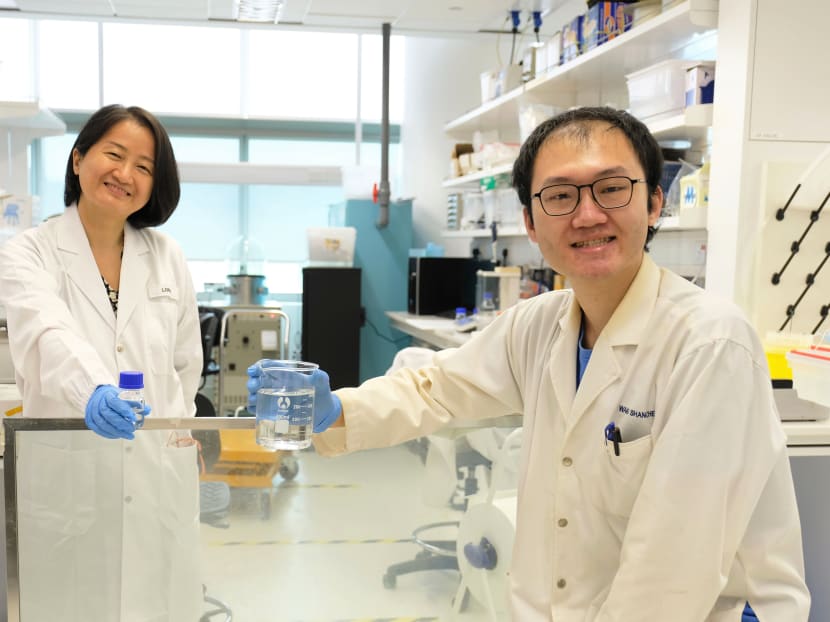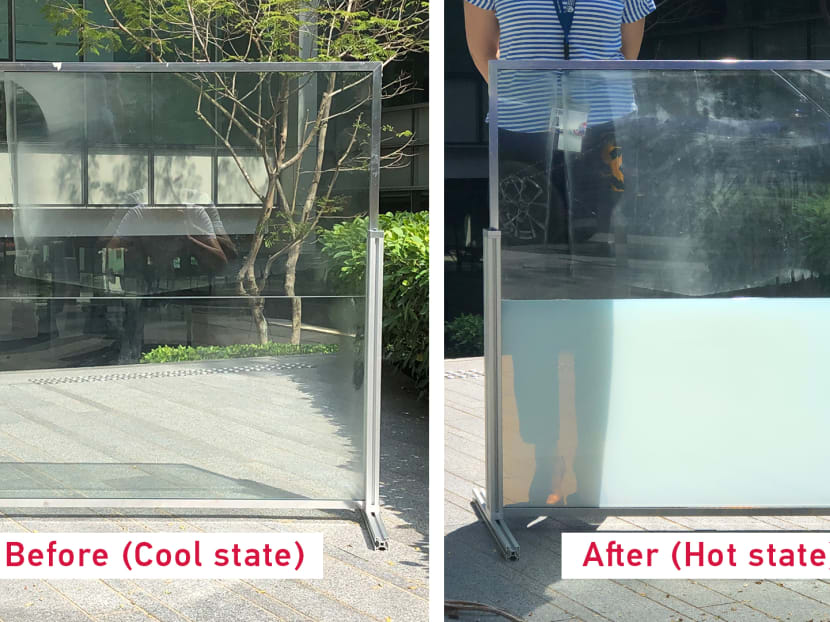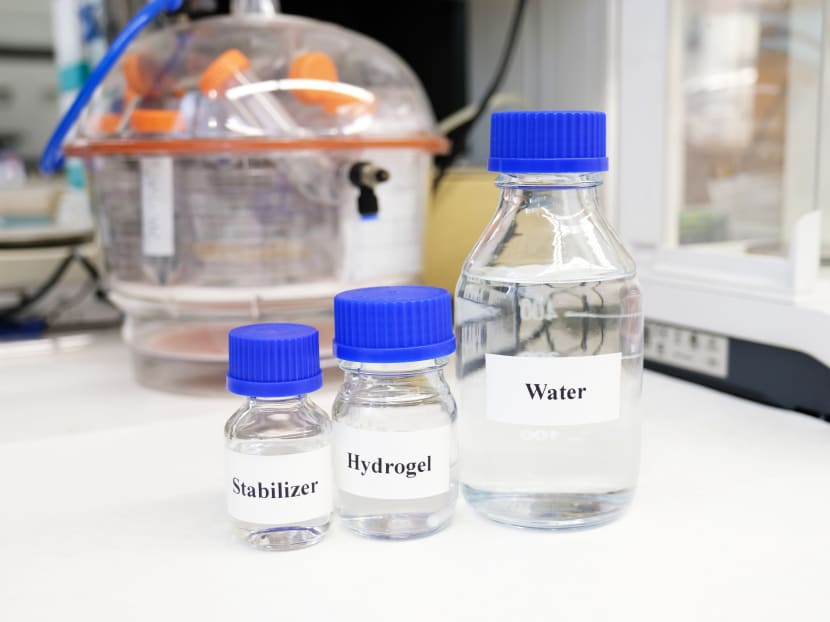NTU scientists invent energy-saving liquid window
SINGAPORE — Scientists at the Nanyang Technological University (NTU) have invented a liquid window pane that can reduce energy consumption by up to 45 per cent.

Members of the Nanyang Technological University research team include Dr Long Yi (left), senior lecturer at the School of Materials Science & Engineering, and PhD student Wang Shancheng.
- The smart liquid window can reduce energy consumption by 45 per cent
- The liquid turns opaque when exposed to heat, allowing it to block sunlight
- The team is looking for partners to help commercialise the windowpane
SINGAPORE — Scientists at the Nanyang Technological University (NTU) have invented a liquid window pane that can reduce energy consumption by up to 45 per cent.
The window pane is made by pouring a hydrogel-based liquid — consisting of micro-hydrogel, water and a stabiliser — between glass panels. It turns opaque when exposed to heat, allowing it to block sunlight, and returns to its clear state when cooled.
This allows it to “simultaneously block the sun to regulate solar transmission while trapping thermal heat that can be released through the day and night”, said NTU in a statement on Thursday (Nov 5).

At the same time, the high heat capacity of water allows a large amount of thermal energy to be stored instead of getting transferred through the glass and into the building during the daytime when it is hot.
When the panel is 1cm thick, it is 30 per cent more energy-efficient than commercially available energy-efficient glass and is also able to reduce noise pollution by 15 per cent, said principal investigator of the study, Dr Long Yi.
It is also cheaper to produce than a normal window pane, at approximately 100 RMB (S$20) per sqm, while other commercially available energy-efficient glass costs more, such as Electro-chromic glass which costs roughly 1000 RMB per sqm to produce.
“By using a hydrogel-based liquid we simplify the fabrication process to pouring the mixture between two glass panels,” said Dr Long who is also a senior lecturer at the NTU School of Materials Science and Engineering.
“This gives the window a unique advantage of high uniformity, which means the window can be created in any shape and size.”

The team, comprising two PhD students, conducted outdoor tests in a hot and cold environment in Singapore and Beijing respectively.
During the Singapore test, the liquid window was cooler at 50°C at noon, compared with a normal glass window, which was 85°C.
The Beijing tests showed that the room using the liquid window consumed 11 per cent less energy to maintain the same temperature compared with the room with a normal glass window.
The highest value of stored thermal energy of the day also peaked at 2pm for the liquid window, as compared to 12pm for the normal window.
“If this temperature peak shift is translated to a shift in the time that a building needs to draw on electrical power to cool or warm the building, it should result in lower energy tariff charges for users,” said NTU.
Simulations using an actual building model and weather data of Shanghai, Las Vegas, Riyadh and Singapore also showed that the smart liquid window had the best energy-saving performance in all four cities when compared with regular glass windows and low emissivity windows.
However, Dr Long said that the liquid panel has limitations as it requires a full replacement of the glass panel, while other conventional energy-efficient panels, such as Low-E glass, require only an additional coating on top of existing windows.
It could also be heavier depending on its thickness and is most suitable for offices as it turns opaque and blocks views during the hottest time of the day in Singapore, usually between 11am and 3pm.
The research team is now looking to collaborate with industry partners to commercialise the window pane.
The research is supported by the Prime Minister’s Office’s National Research Foundation under its Campus for Research Excellence and Technological Enterprise programme, and the Sino-Singapore International Joint Research Institute.











